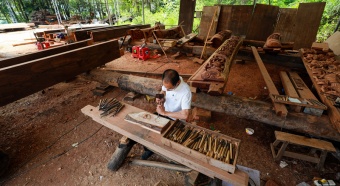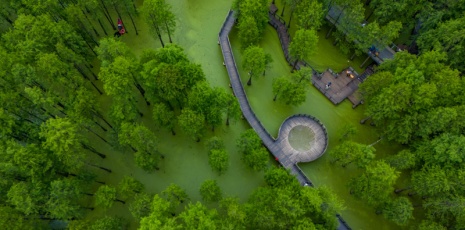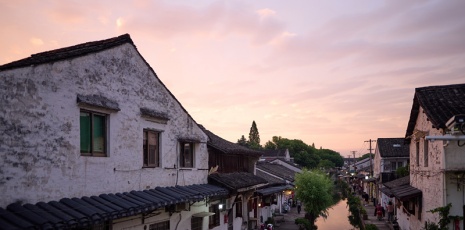
Children play in the ancient city of Kashgar, Northwest China's Xinjiang Uygur autonomous region, Feb 5, 2024. [Photo/Xinhua]
KASHGAR, Xinjiang -- On a sunny morning in October, streets in the Ancient City of Kashgar come alive as the city's daily gate-opening ceremony unfolds.
Performers dressed in armor, reminiscent of Zhang Qian, a Han Dynasty envoy whose journey began around 138 B.C., bring visitors back to 2,000 years ago.
The well-preserved city appears untouched by time. However, the ancient city, part of Kashgar's old town, was a dilapidated and dusty zone only decades ago.
A local proverb reflected the hardships of that time, "Sewage dried in the air, trash swept by the breeze, pipes hung on the wall, and to use the toilet, you'd risk a fall."
Renaud Andre Roger Yves Lambert, Asia editor for Le Monde Diplomatique, gazed at a photo of the old town before its renovation and asked, "Was there an earthquake here?"
What stands today is the result of China's unwavering commitment to protecting ancient heritage and ensuring the well-being of its people.
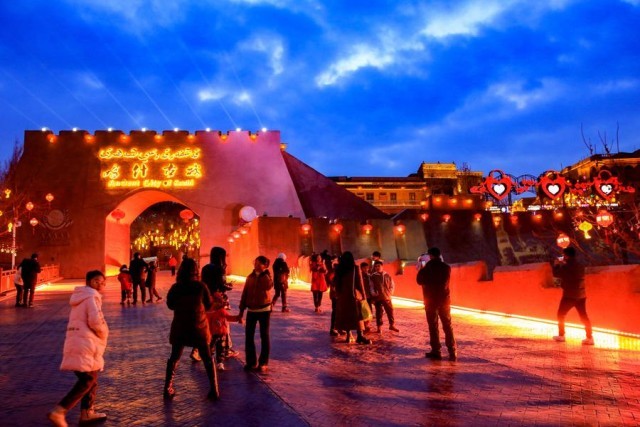
People visit the ancient city of Kashgar, Northwest China's Xinjiang Uygur autonomous region, Feb 5, 2024. [Photo/Xinhua]
In response to the people's pressing needs, the local government adopted a tailored approach, providing each household with a customized design that aimed to retain its original architectural style as much as possible. This strategy not only maintained the city's distinctive features but also transformed it into a livable space with modern amenities, breathing new life into the historic streets.
Ground floors of residents' homes were converted into charming shops, showcasing unique styles and creating a vibrant marketplace, while upper levels remained private family retreats. Various bazaars, each with its own charm, have flourished in the city.
By the end of 2020, a total of 7.049 billion yuan (about $1 billion) had been invested in the renovation project of Kashgar's ancient city, and 49,083 dilapidated houses covering 5.07 million square meters had been renovated.
The renovated city has now created employment for over 10,000 people. With a growing influx of domestic and international tourists, it has become a popular social media hotspot and has successfully upgraded to a national 5A-level scenic spot, the highest standard for tourist attractions in China.
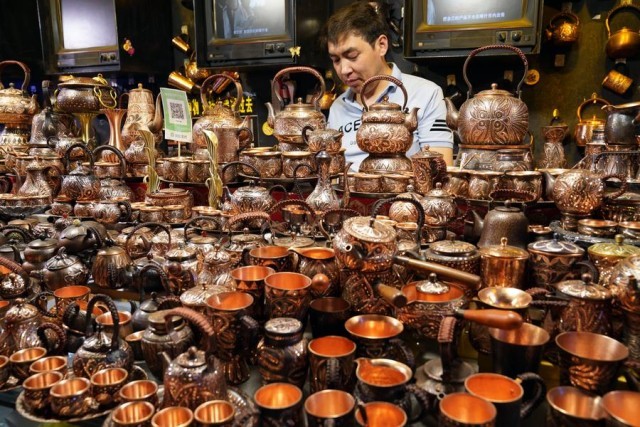
Copper wares are pictured in the ancient city of Kashgar, Northwest China's Xinjiang Uygur autonomous region, Sept 19, 2024. [Photo/Xinhua]
Salamaiti Guli, the owner of a charming guesthouse with intricately carved wooden doors and sun-dappled courtyards, considered herself one of the biggest beneficiaries of the renovation project.
"My house used to be in a dangerous condition, but after the government's protective renovation, it became both sturdy and beautiful," said Guli. "Since it is located in a scenic area, it has been transformed into a guesthouse offering both accommodations and performances."
The performance at Guli's Home soon transformed the afternoon into a celebration of color and sound, enthralling guests from Croatia, Oman, and Ecuador. Infected by the rhythmic traditional music, they joined hands with locals, twirling and swaying in perfect harmony.
"I hope friends from all over the world come to visit my home," Guli said.
Another resident, who has lived here for decades, said, "After the renovation, we now have everything -- water, electricity, heating, and a fully equipped kitchen and bathroom. Living here is truly comfortable."
As he spoke, his wife busied herself at the new stove, filling the air with the mouthwatering aroma of freshly cooked food.

